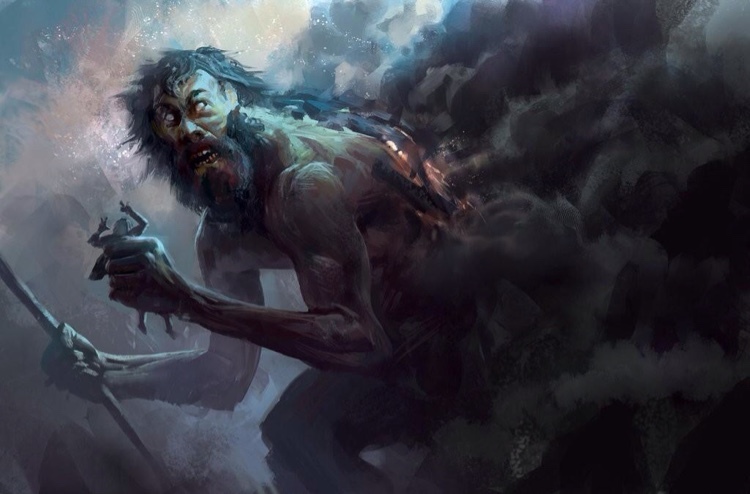MAHAKALI
Kālī (Sanskrit: काली, IPA: [kɑːliː]), also known as Kālikā (Sanskrit: कालिका), is the Hindu goddess associated with empowerment, shakti. The name Kali comes from kāla, which means black, time, death, lord of death, Shiva. Since Shiva is called Kāla—the eternal time—Kālī, his consort, also means "Time" or "Death" (as in time has come). Hence, Kāli is the Goddess of Time and Change. Although sometimes presented as dark and violent, her earliest incarnation as a figure of annihilation of evil forces still has some influence. Various Shakta Hindu cosmologies, as well as Shākta Tantricbeliefs, worship her as the ultimate reality or Brahman. She is also revered as Bhavatārini (literally "redeemer of the universe"). Comparatively recent devotional movements largely conceive Kāli as a benevolent mother goddess.. Shiva lies in the path of Kali, whose foot on Shiva subdues her anger. She is the fierce aspect of the goddess Durga (Parvati).
 |
| Father and Mother of the Universe |
Slayer of Raktabija
In Kāli's most famous legend, Devi Durga (Adi Parashakti) and her assistants, the Matrikas, wound the demon Raktabija, in various ways and with a variety of weapons in an attempt to destroy him. They soon find that they have worsened the situation for with every drop of blood that is dripped from Raktabija he reproduces a clone of himself. The battlefield becomes increasingly filled with his duplicates. Durga, in need of help, summons Kāli to combat the demons. It is said, in some versions, that Goddess Durga actually assumes the form of Goddess Kāli at this time. The Devi Mahatmyam describes:
Out of the surface of her (Durga's) forehead, fierce with frown, issued suddenly Kali of terrible countenance, armed with a sword and noose. Bearing the strange khatvanga (skull-topped staff ), decorated with a garland of skulls, clad in a tiger's skin, very appalling owing to her emaciated flesh, with gaping mouth, fearful with her tongue lolling out, having deep reddish eyes, filling the regions of the sky with her roars, falling upon impetuously and slaughtering the great asuras in that army, she devoured those hordes of the foes of the devas.
 |
| Goddess Kali |
Kali destroys Raktabija by sucking the blood from his body and putting the many Raktabija duplicates in her gaping mouth. Pleased with her victory, Kali then dances on the field of battle, stepping on the corpses of the slain. In the Devi Mahatmya version of this story, Kali is also described as a Matrika and as a Shakti or power of Devi. She is given the epithet Cāṃuṇḍā (Chamunda), i.e. the slayer of the demons Chanda and Munda.Chamunda is very often identified with Kali and is very much like her in appearance and habit.
The story described here is a popular folk tale and not described or hinted in any of the puranas. The puranic interpretation is as follows:
 |
| Goddess Kali dancing on top of GOD Shiva |
"Once Kali had destroyed all the demons in battle, she began a terrific dance out of the sheer joy of victory. All the worlds or lokas began to tremble and sway under the impact of her dance. So, at the request of all the Gods, Shiva himself asked her to desist from this behavior. However, she was too intoxicated to listen. Hence, Shiva lay like a corpse among the slain demons in order to absorb the shock of the dance into himself. When Kali eventually stepped upon Shiva, she realized she was trampling and hurting her husband and bit her tongue in shame"
The Tantric interpretation of Kali standing on top of her husband is as follows:
The Shiv tattava (Divine Consciousness as Shiva) is inactive, while the Shakti tattava (Divine Energy as Kali) is active. Shiva and Kali represent Brahman, the Absolute pure consciousness which is beyond all names, forms and activities. Kali, on the other hand, represents the potential (and manifested) energy responsible for all names, forms and activities. She is his Shakti, or creative power, and is seen as the substance behind the entire content of all consciousness. She can never exist apart from Shiva or act independently of him, just as Shiva remains a mere corpse without Kali i.e., Shakti, all the matter/energy of the universe, is not distinct from Shiva, or Brahman, but is rather the dynamic power of Brahman. Hence, Kali is Para Brahman in the feminine and dynamic aspect while Shiva is the male aspect and static.
 |
| God Shiva and Goddess Shakthi as Ardhanariswara |
Although there is often controversy surrounding the images of divine copulation, the general consensus is benign and free from any carnal impurities in its substance. In Tantra the human body is a symbol for the microcosm of the universe; therefore sexual process is responsible for the creation of the world. Although theoretically Shiva and Kali (or Shakti) are inseparable, like fire and its power to burn, in the case of creation they are often seen as having separate roles.
.JPG) |
| Goddess Durga ( Shakthi ) |
Goddess Bhagvati ( Shakthi ) says- I will clear all the obstacles from the path of such a man who worships me. A devotee who listens to the great tales of how I killed Mahishasura, Shumbh and Nishumbh, on the eighth, ninth and fourteenth days of any month, would be liberated from all sins and poverty. He would become free from fear. A devotee must listen to my divine tales during all the religious ceremonies like making sacrifice, worship and performing Yagya. By doing this, all his enemies will be eliminated. A man who remembers me when faced with dangerous situation remains protected by me.' - Shivapurana





How can I become a devotee of the Rudrasena foundation? I would like to learn how worship Kali Ma according to traditional south Indian tantric religious traditions. I would like to learn how worship Kali Ma with blood sacrifices.
ReplyDelete